As my How To Clean Vintage Enamelware post was so popular I thought I’d go ahead and share my collection of thrifted & inherited ceramics + the groovy cleaning tips from the past to keep it all in top condition!

Check out my quirky collection & discover how to maintain your own vintage ceramics & porcelain:
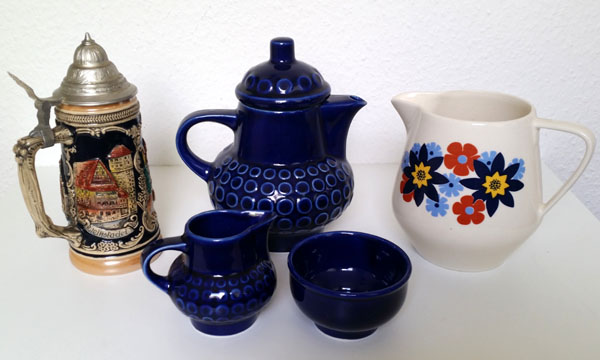
Each of these vintage beauties was thrifted for under €0.50! Whoohoo!
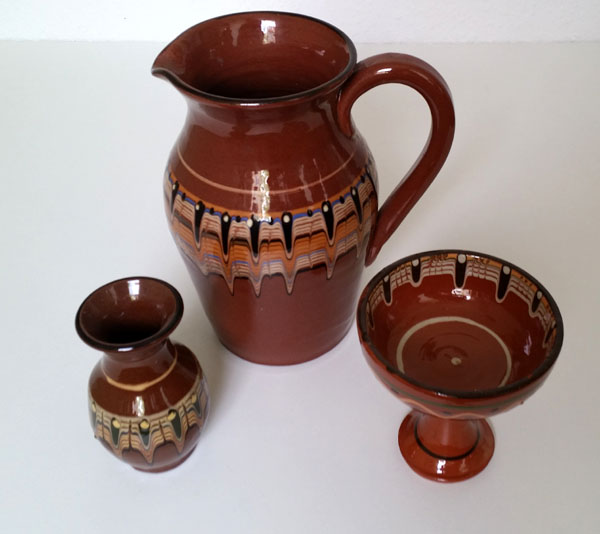
This 1970’s set was 2 years in the making: I inherited the jug first then spied the matching vase at a flea market months later and finally scored the goblet while thrifting the following year – I’m always on the lookout for more pieces to add to this funky set!
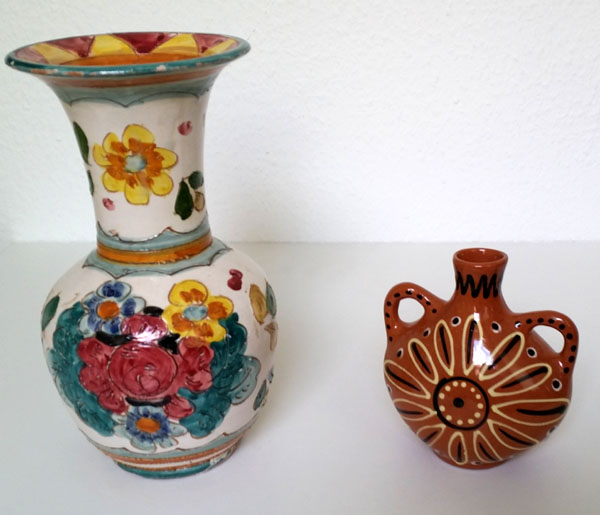
Both of these were discovered wrapped in this dress in Tante Uschi’s treasure chest!
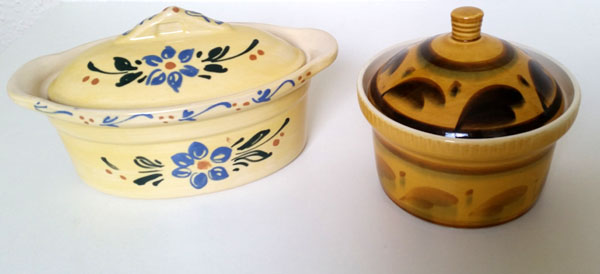
I love creating mini quiche and serving them in my groovy little ceramic pots (bonus: my kiddo will eat almost anything if it’s served in a fancy covered dish!)
Thanks to a tip off in the comments I’ll now be ceasing to use these pretty pots for food as the risk of possible lead leakage is rather terrifying.
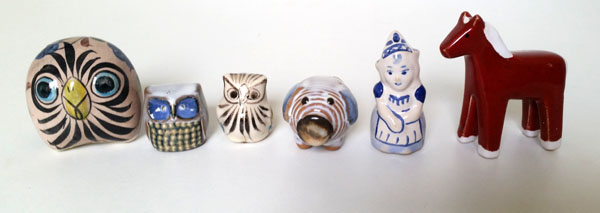
My mini thrifted souvenirs – thrifting while travelling is awesome and I always try to pick up a little piece of ceramic history if I can!
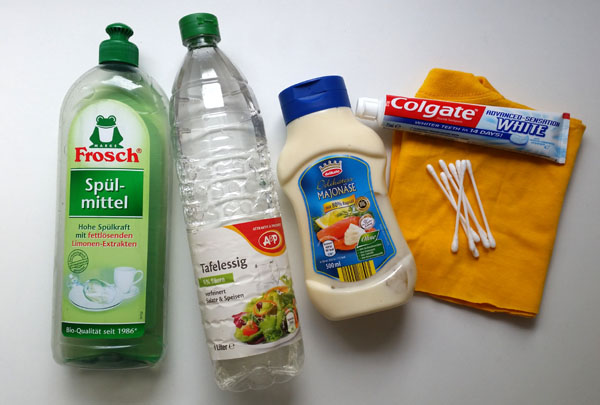
Raid your kitchen & bathroom and put together your ceramic cleaning toolkit!
My passed down tips for cleaning ceramics and porcelain:
– Remove any dust and dirt with a soft, dry brush or cloth (I use a t-shirt scrap) in a gentle sweeping motion from the top down.
– Handwash the item in a mild/diluted dish washing soap & lukewarm water. Water that is too hot or too cold can cause damage. Never use abrasive cleaners, scouring pads or put porcelain or ceramic in your dishwasher.
– Should your vintage ceramic have stubborn sticky bits simply apply a bit of mayonnaise to the area and leave it to sit for an hour or so then wipe gently with a soft cloth.
– Built up grime in hard to reach detailed areas can be removed with a cotton swab dipped in a mild water & dish soap solution.
– Hard water & alcohol stains can be removed with either lemon or white vinegar mixed with water.
– Yellow tobacco stained pieces look much better after a gentle scrub with whitening toothpaste.
– After cleaning allow your vintage ceramics to air dry then gently wipe with a soft cloth or towel to remove any water unsightly water spots.
Discover all of my upcycling goodies at RefashionistaSheri.com
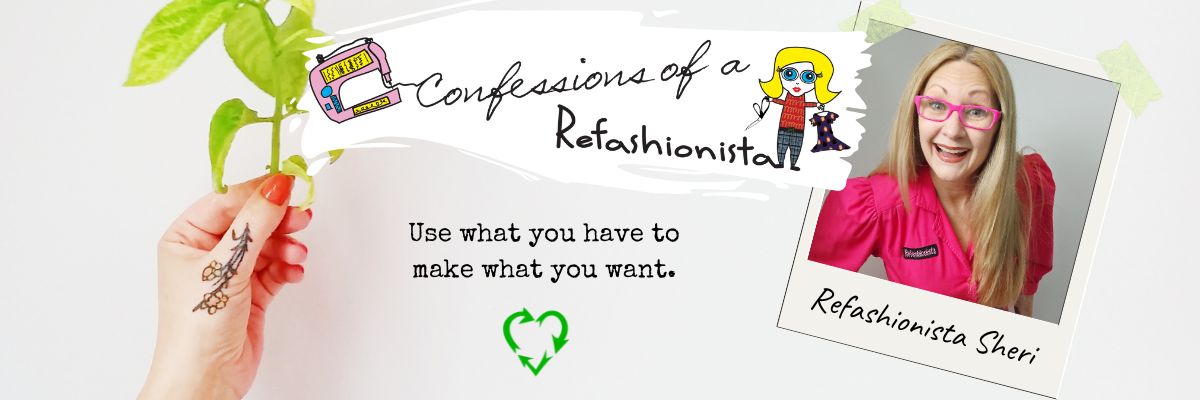
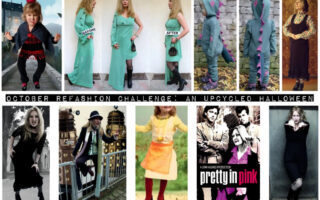
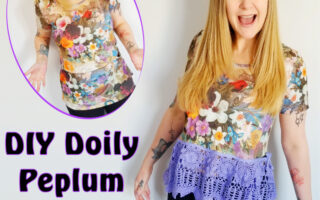


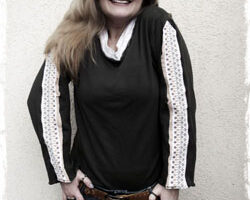

Ha! Our thrift stores don’t look anything like that. We have mostly junk. And for a lot more money. And if it happens to be anything decent it is ridiculously priced. The best thrift stores I ever went to were in England when my hubby was in the military.
I have to do A LOT of digging through broken, dirty, stained items to find my treaures and then give them a good scrubbing once home, the bulk of the thrift and charity shops here make no effort at all and simply stuff ther shelves with whatever is donated. I loved visiting my local charity shops when I lived in London, everything was always (relatively) clean and nicely displayed…
Thanks for the helpful tips on the cleaning, although I’m quite overwhelmed by the lead leaching thing. I didn’t know about this. Nearly all my cooking and eating things are very old, which I have either inherited or thrifted. My favourite tea set (which my kids also use for their water!) has even gone a bit ‘crackly’. They are so beautiful and lots have a big sentimental attachment too. The thought of replacing it all with new things is really upsetting. Do you know of anyone who has tried out those testing kits, and whether they are any good? Oh no, I don’t know what to do now! Obviously safety comes first, but how heart-breaking to have to replace everything.
I know! It’s such a crazy shame to have to make those wonderful inherited kitchen items display/decor only but better safe than sorry.
I have no idea if those testing kits are actually worth it…I’m trying to find out if there’s a reliable DIY testing technique – I’ll update with any new info I discover.
I am a little scared of cooking in vintage ceramics because I have started hearing about lead leaching out of the glaze. Lead is apparently even a problem for children who bathe in old claw foot tubs. For decorative pieces I think it’s safe though.
Ack! Thanks for the info Candace…after a bit of googling & scary stat-finding I shall most definitely be using my collection for display purposes only.
That little red horse is just the cutest! Thanks for the tips – mayonnaise, I’ll remember that!
The horse was an adorable thrift score from an teeny tiny village flea market in Denmark 😀 Mayo works great for removing sticky bits from just about any kind of surface + it also helps disguise stubborn glass/water rings on wooden tables – just slather some on and leave it overnight then wipe with a soft cloth.